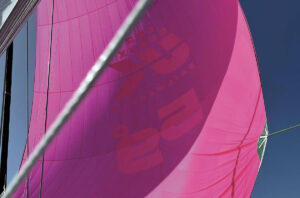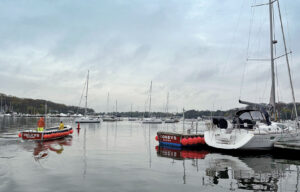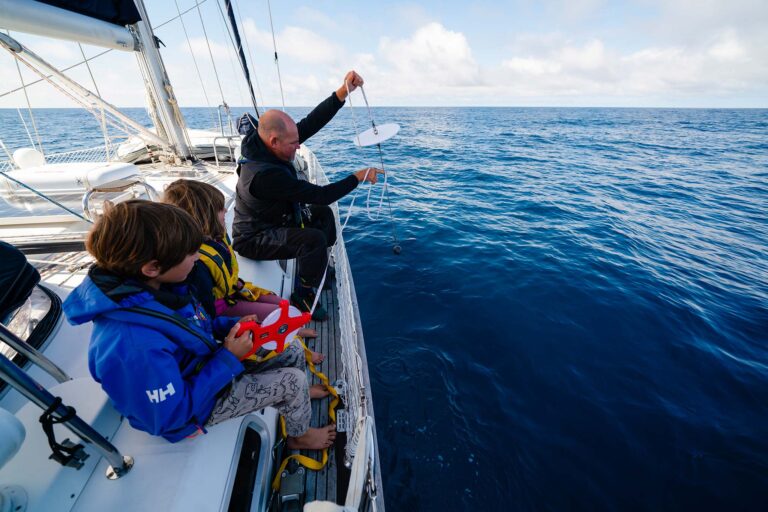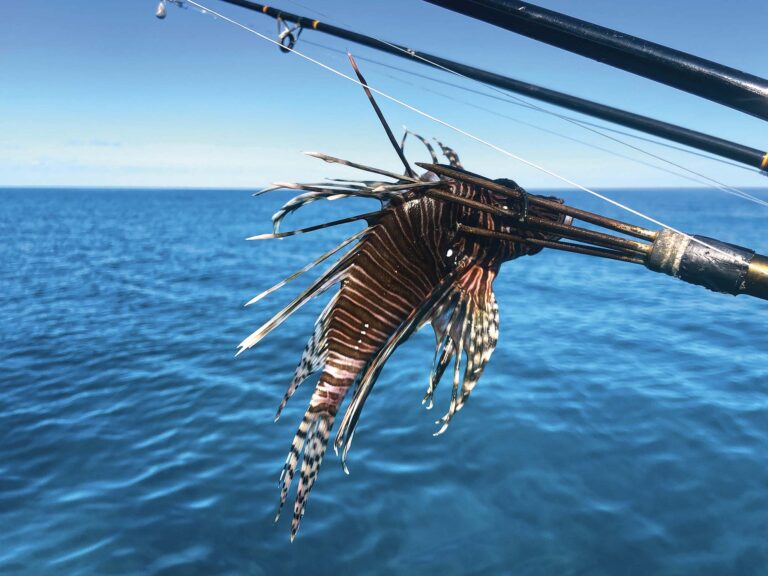In the July issue of SAIL we published Jim Hancock’s Scope for Improvement?” in which the author argues that the traditional anchoring rules of thumb may need revision. More scope is almost always better, unless you don’t have the room to swing, or the bottom is foul.
There’s more to know, however, and this is where Hancock lays out the facts surrounding the catenary curve, as we promised in your print issue.
Additional Thoughts on Anchoring
Most anchors used on pleasure boats today are designed to dig into the sand or mud bottom and provide a secure attachment. Figure 1 shows an anchor on a flat seabed with the lead angle, which is the angle that the rode makes with the seabed measured upward from the bottom. The force (T) that the rode exerts on the anchor can be broken into horizontal and vertical components. Th and Tv.
If your anchor is dug in on a flat bottom and has a lead angle of 0 degrees, the force that the rode exerts on the anchor is purely horizontal (Th=T,Tv=0). This is the optimal lead angle and is what one wants to achieve in an anchoring system. As the lead angle increases, so does the upward force on the anchor. Upward force has a tendency to break the anchor out of the bottom. Eight degrees is considered by most experts to be the maximum lead angle that can be maintained without compromising an anchor’s holding ability. Lead angle is controlled by veering out more, or less, scope; scope is the ratio of rode length (S) to water depth (D). The catenary curve
The curve that an anchor chain follows is known in mathematics as a catenary curve. The name catenary comes from the Latin @I {catena}, which means chain, and was first applied to this curve by the mathematician Huygens in 1690. The following year Huygens and fellow mathematicians Leibniz and Bernoulli each obtained independently the equation that describes the catenary curve. For those who are more mathematically inclined, here is the catenary equation that these great mathematicians developed is as follows:
y = h*cosh((x+k)/h) + b where: x,y = Coordinate pair on the catenary curve k = Constant of integration (horizontal offset of vertex) b = Constant of integration (vertical offset of vertex) h= H/Θ H = Horizontal load on chain Θ = Weight of chain / unit length.
Notice that the catenary equation uses the @I {hyperbolic cosine} cosh(), which is an exponential function and is quite different from the trigonometric cosine, cos(), that most of us learned in high school.
I should also add that the analysis I used in the July piece on anchoring uses the catenary equation to determine the shape of a hypothetical chain. I evaluated the equation over a range of values in an Excel spreadsheet, and then computed the length of the chain using a numerical integration of the curve.
Although I believe that we can learn a great deal about anchoring from the solution of the catenary equation there are some significant assumptions that I made in my analysis and I acknowledge them here.
1. My model uses a static analysis, meaning that the wind, wave and current loads are assumed to be steady. In gusty or rough conditions it is possible that the dynamic loads on an anchoring system could be significant.
2. The seabed is assumed to be flat. While this is often the case it is just as often not the case. Although the need for this simplifying assumption is obvious, anchoring on a sloped or uneven seabed can have a dramatic effect on an anchor’s ability to hold, either favorably or unfavorably.
3. The length of the chain between the bow roller and the surface of the water is treated as though it is submerged. However attributing buoyancy to this short segment of chain is a conservative assumption when computing minimum scope since the dry chain would give the rode a deeper sag.
* The condition of being free-hanging means that there are no external loads in mid-span. For example, the main cables of a suspension bridge are not free hanging because they have vertical suspender cables hanging from them. Because of this, the main cables on a suspension bridge follow a @I{parabolic} curve rather than a catenary curve.









